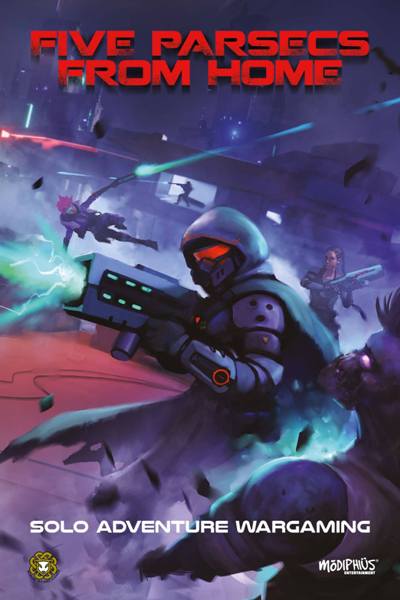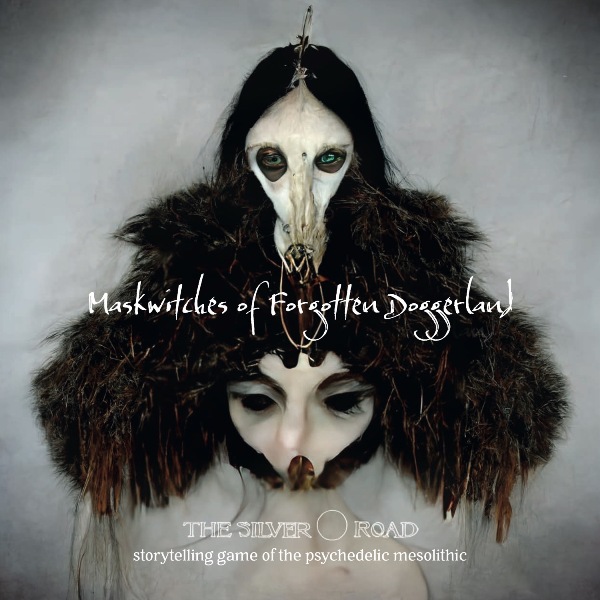Year of the Fans
By The Warden
 Less than 48 hours from now, the year will come to an end and with such endings comes the tradition of looking back at the previous 364 days of 2012 and writing up a summary of how this year fared for roleplaying games, publishers, and their fans. Over the past couple of days, I’ve been going over old columns, news posts, and other tidbits of saved data, aiming for an overall impression of the year’s events and I’ve come to a conclusion.
Less than 48 hours from now, the year will come to an end and with such endings comes the tradition of looking back at the previous 364 days of 2012 and writing up a summary of how this year fared for roleplaying games, publishers, and their fans. Over the past couple of days, I’ve been going over old columns, news posts, and other tidbits of saved data, aiming for an overall impression of the year’s events and I’ve come to a conclusion.
Power has shifted from the designers and publishers to the fans. From the comfort of their home, players and Gamemasters have opportunities to use the Internet to not only choose which products they want to buy and in which medium, but help bring aspiring projects to life in ways never before possible. Instead of merely reacting, RPG fans can directly affect the 2013 catalogue through devices such as Kickstarter/IndieGoGo, public playtests, and social media.
On the surface, my conclusion may seem a bit outdated and/or expressed to death as there have long been so many online innovations and tools expanding the reach of RPGs to the general population; yet those originally provided means for fans to stay in the loop, express personal comments, and share stories of their favourite games through publisher forums and fan sites. In its own way, these means allowed consumers to impact the shape of the industry’s future by demonstrating which projects stuck out in their minds, yet this has always been after the products were placed on physical or virtual shelves. If a product failed to meet expectations and catch fire, it was after the publisher invested significant amounts of money into the process. It was, in a way, too little, too late.
2012 showed us how much power consumers have in shaping next year’s product line in ways even their designers and publishers could never have imagined. Yes, we would have Numenera and Fate Core to look forward to no matter what, but now they are massive volumes loaded with more artwork, supplements, toolkits, and accessories than the publisher would have thought possible thanks to the fans who not only wanted to see them released, but with a vengeance. Instead of bitching about edition wars, fans have now been granted the ability to shape the future of the D&D brand. And why should only major brands have the benefit of online gaming tools when Google Hangout makes it possible for anyone to play any game with friends and strangers from around the world with full-colour maps, dice rollers, and more.
It’s an incredible time to be a roleplaying fan. Yes, indeed. But there’s a catch.
THE DARK SIDE OF SUCCESS
For publishers, all of this can be a godsend allowing even the smallest publisher to raise enough funds and awareness for their concept than they could ever achieve on their own or through traditional means. Or it can lead to a rare, yet damaging, side effect: over-inflation. It’s nothing new in any market, but the scale of over-inflation today can be out of any experienced publisher/designer’s grasp. Take the Far West transmedia setting/RPG touted as last year’s big hit raising close to $50,000, ten times its original goal. The pet project of Adamant Entertainment’s Gareth-Michael Skarka, it has since become an incredible burden that may very well threaten his entire operation. In the past couple of months and after a year of delays, Adamant had sold off their rights to successful brands like ICONS to its creator, Steve Kenson, and other in-development projects like Warlords of the Apocalypse to Super Genius Games. This past week, Skarka publicly shared this update with all Far West backers:
“I find it inexcusable that we’re a year past my original estimated delivery, and your patience and support has been more valuable than I can ever say. This has been a horrible year — involving the lesson learned that we were completely unprepared for the scale of the success of FAR WEST, which resulted in much more work spread among too few people (and that was before the gut-punch of losing a third of our team), and the stress and depression that resulted. The rest of Adamant’s business suffered as a result, which of course made things worse (sales of our other products plummeted, and our financial situation grew worse — resulting in, you guessed it, more stress).
“All I can promise you is that there’s light at the end of the tunnel — we’re near to done, as you can see — and that 2013 will be a better year for us all.”
From Adamant Entertainment’s website, dated Dec. 26/2012
Another example is the Razor Coast Kickstarter set up by Frog God Games in an effort to take over the failed efforts to produce this Pathfinder supplement. Originally designed by Nick Logue and announced back in 2008, this new fundraiser attempts to pick up where the previous incarnation left off and finally bring it to life… just at a very expensive price.
Tenkar’s Tavern, an OSR-dedicated blog, has gone to great lengths documenting the completion rates of assorted Kickstarter projects and it doesn’t look good. Back in October, the author shared progress reports on the 15 RPG Kickstarter projects he had funded and seven of them were undelivered at the time of writing with six of them delivered later than originally promised. That leaves only two arriving on time. In the case of every undelivered project, every one of them were vastly overinflated at an average of seven times their original goal.
It brings up a vital question that will/should become forefront in the coming year: when is enough, enough? Should these projects set down a cap on crowdfunding or will this be part of a learning curve teaching designers and publishers the risks of mass success so they can account for such measures appropriately? For example, if you raise 300% of your initial goals, should you account for the additional salaries of bringing on an extra editor/layout artist/regular artist? The reality is nothing’s changed when it comes to independent RPG publishing other than where the starting line is positioned, a point excellently made on the Black Diamond Games blog.
“…there is no free lunch. There is no secret pill that will allow for thousands of years of commerce to come to a halt because of a website. The game trade exists because of that balance of passion and business. Kickstarter allows those with passion and a sense for business to get a leg up, to get a shot at the show. Kickstarter is not the show. Those who can strike the balance can succeed, but there is no substitute for balance.
“The question is really what will be left when the dust settles. Will some of these companies make it into the trade? Will there be collateral damage, a besmirching of an industry that is already black with smirch? Will an army of bathrobe businessmen turn people off to small press much like the “flight to quality” that occurred with D20 and roleplaying games? The D20 logo is the kiss of death for most D&D players. Recognizing that started with retailers. Will the Kickstarter logo on a product work the same way?”
From the Black Diamond Games blog, dated Dec. 13/2012
CUE THE SPIDER-MAN QUOTE
As tremendous as this past year has been for up and coming games, settings, and systems, there is an equally tremendous risk attached to this latest craze and it’s similar to the d20 glut in many scary ways. What starts out as a great idea can easily turn into an explosion so massive that it turns into an implosion for nearly 50% of the industry. And just like the d20 glut, the ease to produce products intended to meet the incredible demand will soon produce a large amount of problematic products and overwhelm many publishers out there.
So here’s the catch and it applies to every single one of us self-labelled RPG fans: take it easy. With great power comes great responsibility. If power has shifted to the fans in setting the flow for next year’s product line, then the responsibility lies with the fans as much as designers and publishers to ensure things don’t get out of hand. Simultaneously, publishers and designers plugging their upcoming projects with these new tools need to understand the sky is not always the best limit. Just ask Icarus. Oh wait, he’s dead.
By this time next year, I truly hope these trends have not rung the death toll for what can be an exciting opportunity for not only independent designers and publishers, but the entire industry. By this time next year, I hope any bugs and issues with over-inflation have been addressed and countered by all parties involved to the point that this becomes ancient history. Because if not, we have no one else to blame but ourselves.


